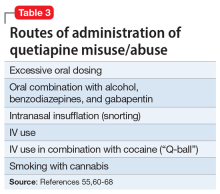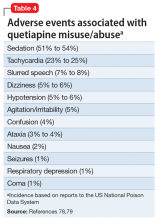1. Zemishlany Z, Aizenberg D, Weiner Z, et al. Trihexyphenidyl (Artane) abuse in schizophrenic patients. Int Clin Psychopharmacol. 1996;11(3):199-202.https://www.nytimes.com/2018/04/07/health/antidepressants-withdrawal-prozac-cymbalta.html . Published April 7, 2018. Accessed December 11, 2018.https://globalnews.ca/news/846576/antidepressant-wellbutrin-becomes-poor-mans-cocaine-on-toronto-streets/ . Published September 18, 2013. Accessed December 11, 2018.y -aminobutyric acid analogues baclofen, gabapentin and pregabalin in the UK. Br J Clin Pharmacol. 2013;78(1):190-191.https://www.asam.org/docs/default-source/public-policy-statements/1definition_of_addiction_long_4-11.pdf?sfvrsn=a8f64512_4 . Published August 15, 2011. Accessed July 23, 2018.


